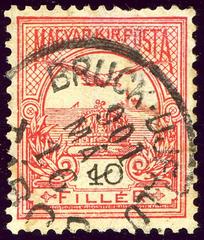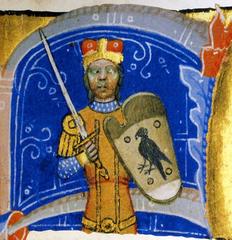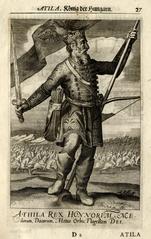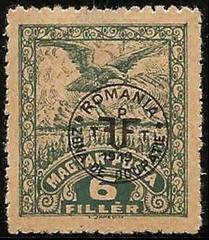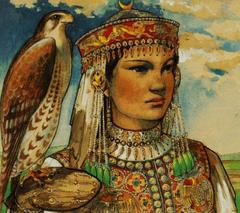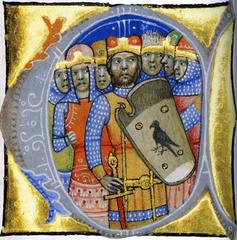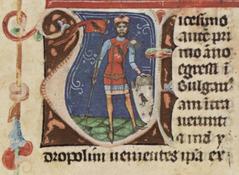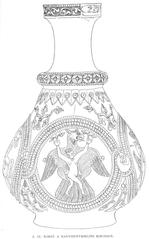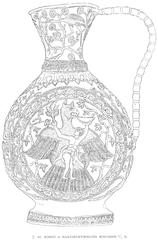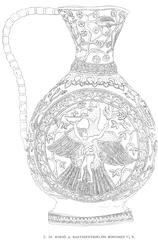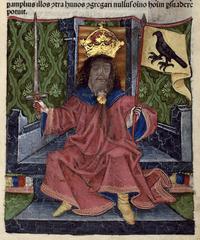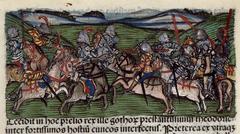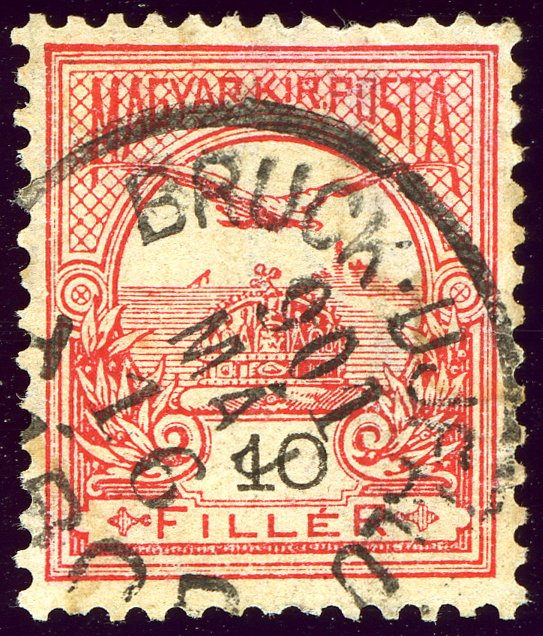
Turul Monument Budapest: Visiting Hours, Tickets, and Historical Significance
Date: 14/06/2025
Introduction
The Turul Monument is one of Budapest’s most iconic landmarks, offering a vivid window into Hungary’s mythological roots, national pride, and historical resilience. Perched near the entrance of Buda Castle and overlooking the Danube, the majestic bronze statue of the Turul—the mythological bird of prey from Hungarian legend—serves as a powerful symbol of Hungarian identity and unity. This comprehensive guide details the origins, significance, and visitor information for the Turul Monument, ensuring you can plan a meaningful and memorable visit to this celebrated site.
Table of Contents
- Mythological and Historical Background
- The Turul as a National Symbol
- Turul Monuments in Budapest: Locations and Context
- Visiting Information: Hours, Tickets, and Accessibility
- Getting There: Transport and Practical Tips
- Visitor Experience and Nearby Attractions
- Cultural Significance and Contemporary Debates
- Frequently Asked Questions (FAQ)
- Conclusion
- References and Further Reading
Mythological and Historical Background
The Turul is deeply embedded in Hungarian folklore as a bird of prey—most often depicted as a falcon or eagle. According to legend, the Turul appeared in a prophetic dream to Emese, mother of Árpád, founder of the Hungarian nation, foretelling that her descendants would lead the Magyars to the Carpathian Basin (budapest.city; Wikipedia). The bird has since become a symbol of divine guidance, protection, and the legitimacy of Hungarian nationhood.
Throughout history, the Turul has been closely connected to the Árpád dynasty and has featured in medieval chronicles as the totemic ancestor of the Hungarian ruling clan. Archaeological finds—including 10th-century artifacts—attest to its enduring significance in Hungarian culture (Wikipedia; realmwhispers.com).
The Turul as a National Symbol
Over centuries, the Turul evolved from a mythological creature to a national emblem, appearing on coats of arms, military insignia, and postage stamps. It embodies Hungary’s values of strength, resilience, and freedom, often depicted as a vigilant guardian with wings outstretched, watching over the nation. The Turul motif also appears in art, literature, and public monuments, reflecting its deep roots in Hungary’s collective memory (budapest.city; Wikipedia).
Turul Monuments in Budapest: Locations and Context
Buda Castle Turul
The most famous Turul statue in Budapest stands on the gates of the Royal Palace in the Buda Castle district, adjacent to the ornate Habsburg Gate (Buda Castle Official). Created by Gyula Donáth in 1905, this dramatic bronze sculpture—with its wings spread wide—has become one of the city’s most photographed landmarks.
Gellért Hill Turul
Another prominent Turul statue is located atop Gellért Hill, offering sweeping city vistas and reinforcing the bird’s role as a guardian of Budapest (budapest.city). Erected in 1985, this statue stands as a reminder of the Turul’s protective symbolism.
Memorials and Controversies
Certain Turul monuments, such as the one in Budapest’s 12th district, also serve as memorials for World War II victims. However, some have sparked debate, particularly regarding the inclusion of names linked to the Arrow Cross Party, raising questions about public commemoration and historical memory (hungarianconservative.com).
Visiting Information: Hours, Tickets, and Accessibility
Visiting Hours
- Open 24/7: Both the Buda Castle and Gellért Hill Turul statues are accessible at all hours, as they are located outdoors in public spaces.
- Best Times: Early mornings and late afternoons provide the best lighting for photography and a quieter experience.
Tickets and Entry
- Admission: Free; no tickets or reservations required.
- Funicular: If using the Buda Castle funicular, tickets are required (approx. 3,000 HUF, 7:30 AM–10:00 PM).
Accessibility
- Paths: The Buda Castle Turul is accessible via paved paths, though cobblestones and stairs may challenge visitors with limited mobility.
- Gellért Hill: Reaching the Turul statue involves a moderate walk or hike; not all paths are wheelchair-friendly.
- Elevators/Funicular: Wheelchair access is available via the funicular and castle elevators; check current accessibility updates before your visit.
Getting There: Transport and Practical Tips
By Public Transport
- Funicular: From Clark Ádám Square to the upper castle terrace.
- Buses: Lines 16 and 16A stop at Dísz tér, a short walk from the monument (Evendo).
- Walking: Scenic routes from the Chain Bridge or Fisherman’s Bastion; expect an uphill walk.
By Bicycle
- Use Budapest’s BuBi public bike sharing system for eco-friendly access, with docking stations citywide (Budapest by Locals).
Practical Tips
- Comfortable Footwear: Navigating cobbled streets and slopes is easier with good shoes.
- Sun Protection & Water: Especially important during summer visits.
- Photography: Bring a camera for panoramic shots at sunrise or sunset.
Visitor Experience and Nearby Attractions
The Monument
Created in 1905, the Buda Castle Turul statue is a bronze masterpiece embodying the bird’s fierce gaze and outstretched wings. Its elevated setting makes it a dramatic focal point of the castle district (Buda Castle Official).
Views
Enjoy breathtaking panoramas over the Danube, the Parliament, and the city’s historic skyline—especially at dawn or dusk (Evendo).
Nearby Sites
- Buda Castle: UNESCO World Heritage site with museums and galleries.
- Fisherman’s Bastion & Matthias Church: Both within 10–15 minutes’ walk.
- Castle Bazaar (Várkert Bazár): Cultural events and local crafts (Budapest by Locals).
Facilities
- Restrooms: Available in the castle district; small fee may apply.
- Food & Drink: Numerous cafés and restaurants nearby.
Guided Tours
Various walking tours include the Turul Monument, offering historical and cultural context. Booking ahead is wise during peak seasons.
Cultural Significance and Contemporary Debates
The Turul remains a living symbol in Hungary, celebrated during national holidays and cultural events. At the same time, it features in ongoing debates about minority rights, public memory, and nationalism, particularly relating to Hungarian communities abroad (Daily News Hungary; Hungarian Conservative). Its presence in cities beyond Hungary’s borders, such as in Transcarpathia, underscores its role as a marker of identity and heritage.
Frequently Asked Questions (FAQ)
Q: What are the Turul Monument visiting hours?
A: The monument is outdoors and accessible 24/7. Daylight hours (7:30 AM–sunset) are recommended for safety and best viewing.
Q: Is there an admission fee or tickets required?
A: No, visiting the monument is free of charge. Funicular and some museums in the district require tickets.
Q: How do I get to the Turul Monument?
A: Use the Buda Castle funicular, buses 16/16A, or walk from the city center. The monument is near the upper funicular station.
Q: Is the monument accessible for visitors with disabilities?
A: The area is generally accessible via the funicular and elevators, but cobblestones and some inclines may present challenges.
Q: Are guided tours available?
A: Yes, many historical walking tours include the Turul Monument.
Q: What is the best time to visit?
A: Early morning or late afternoon for fewer crowds and optimal lighting.
Conclusion
The Turul Monument in Budapest is a must-visit destination for those seeking to understand Hungary’s rich cultural heritage, mythological origins, and enduring national spirit. Its striking presence at Buda Castle, panoramic city views, and free public access make it an essential stop for travelers. Pair your visit with nearby attractions for a full day immersed in Budapest’s historical charm, and consider joining a guided tour for deeper insights.
For up-to-date travel information, downloadable maps, and guided audio tours, check out the Audiala app. Follow our articles and social media channels for more travel inspiration and the latest updates on Budapest’s historical sites.
References and Further Reading
- Visiting the Turul Monument in Budapest: History, Tickets, and Travel Tips, 2025, Budapest City
- Turul, Wikipedia
- The Turul Statue Budapest, Just Budapest, 2025
- Turul Statue Budapest: Historic Monument and WWII Memorial Protection, Hungarian Conservative, 2025
- Visiting the Turul Statue in Budapest: History, Significance, and Visitor Information, Hungarian Tourism Agency, 2025
- Video: Hungarians Outraged as Ukrainians Removed National Symbol from Munkacs Fort, Daily News Hungary, 2022
- Turul Monument Visiting Hours, Tickets, and Guide to Budapest Historical Sites, Evendo, 2025
- Exploring the Turul Monument in Hungary: A Symbol of Strength and Heritage, TimeTints, 2025
- Budapest in June: Weather and Travel Tips, Travelling Mandala, 2025
- 13 Unique Memorials and Statues in Budapest, Trip to Budapest, 2025
- The Enigmatic Turul: A Soaring Symbol of Myth and Majesty, Realm Whispers, 2025
- Buda Castle Official Website, 2025
